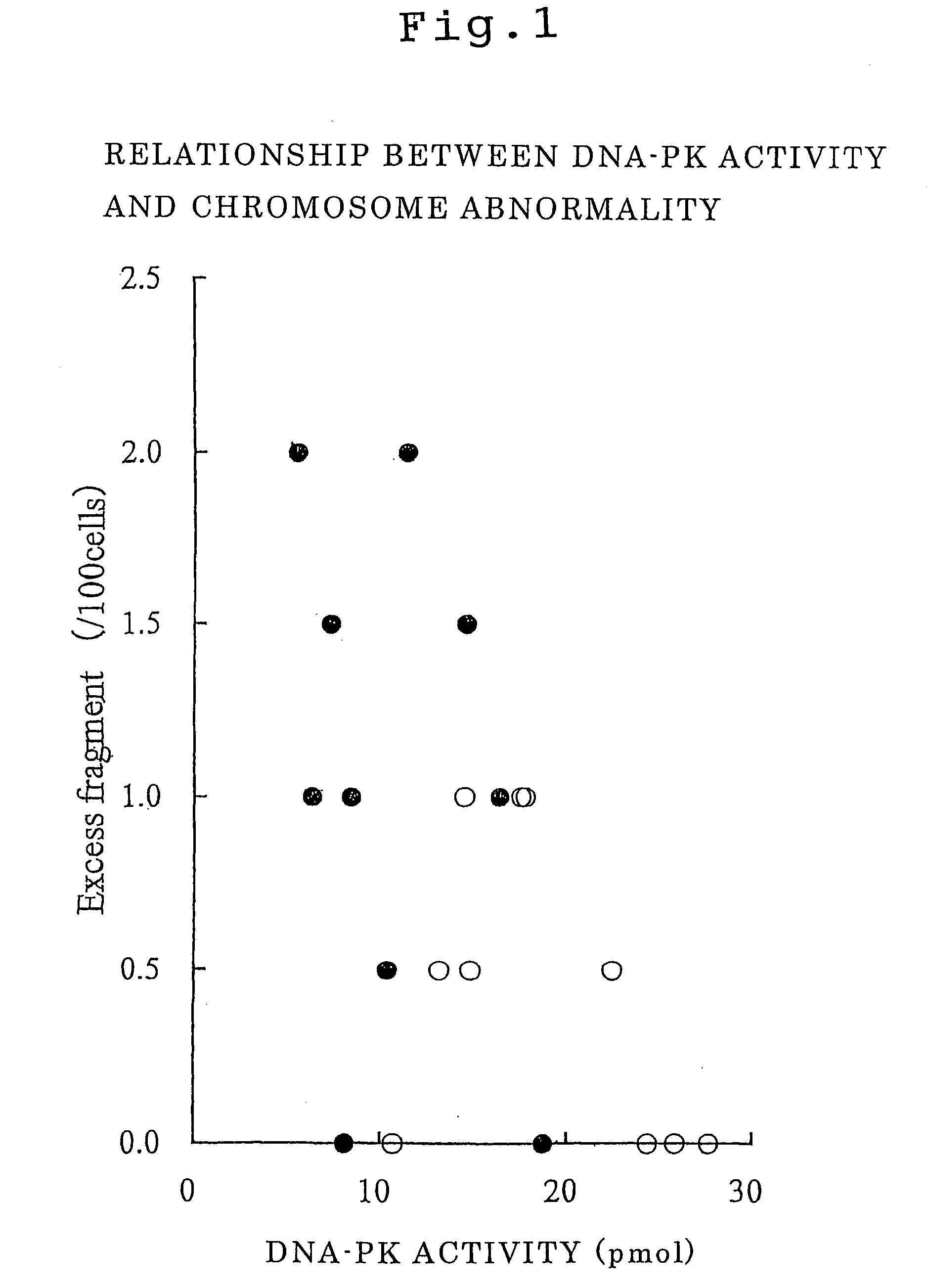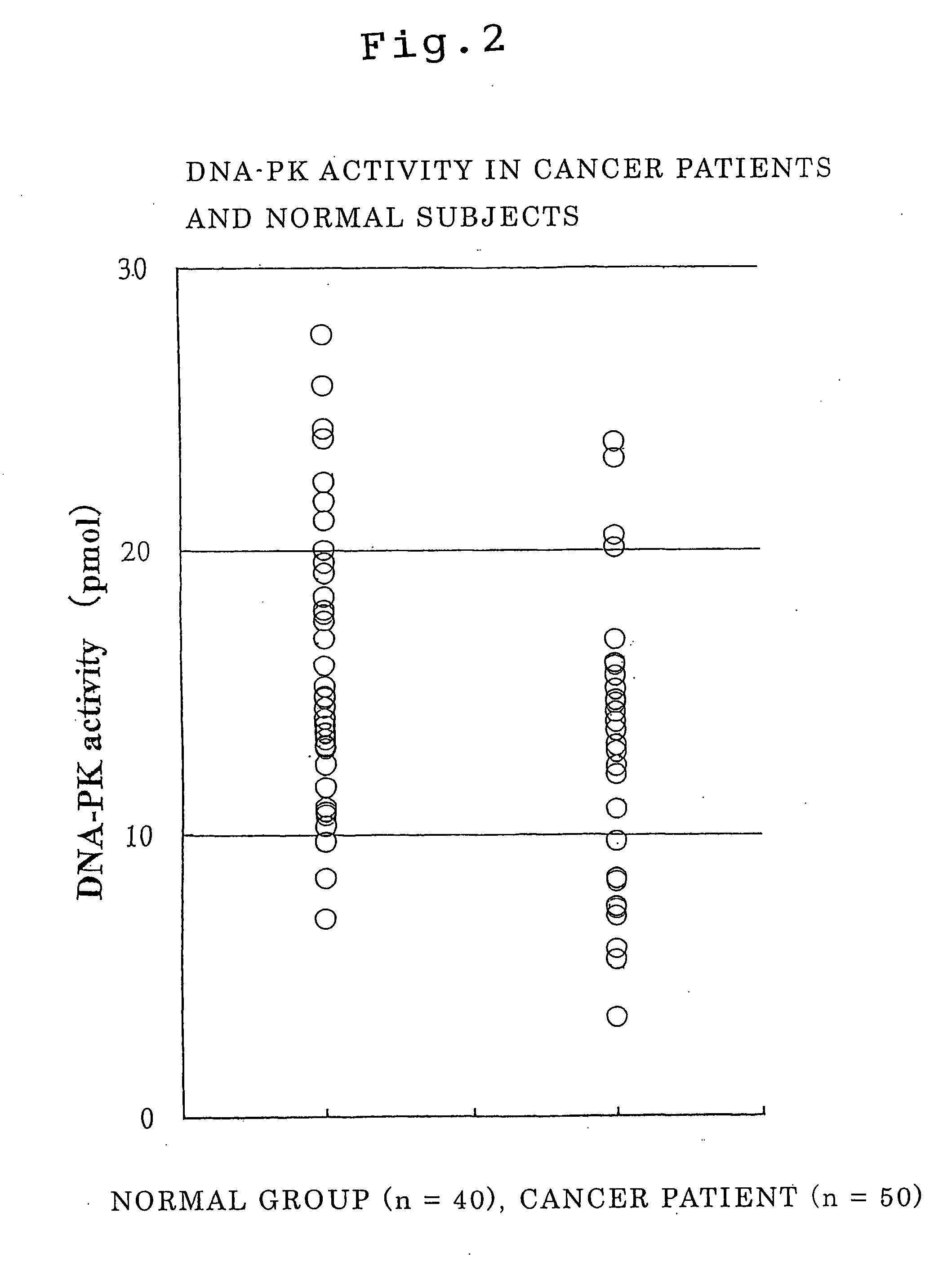Method of diagnosing cancer and method of judging cancer risk
a cancer and risk technology, applied in the field of cancer risk assessment and cancer risk assessment, can solve the problems of difficult use, inability to properly diagnose cancer in the general diagnosis of cancer, and inability to apply conventional tumor markers widely to the diagnosis of cancer in general
- Summary
- Abstract
- Description
- Claims
- Application Information
AI Technical Summary
Problems solved by technology
Method used
Image
Examples
example 1
Relationship Between DNA-Dependent Protein Kinase Activity and Chromosome Abnormality
[0043] Relationship between DNA-dependent protein kinase activities in lymphoid cells of a normal group or cancer patients and chromosome abnormalities of the respective cells was investigated. The lymphoid cells of the cancer patients were derived from patients suffering from breast cancer, uterine cancer, head and neck cancer, or malignant lymphoma.
[0044] The measurement of DNA-dependent protein kinase activity in the lymphoid cells was performed as follows:
[0045] Lymphoid cells were obtained from blood of the normal group and the cancer patients. Each 20 mL blood of the healthy subjects and the cancer patients was layered on Lymphoprep (manufactured by Nycomed) and was centrifuged at 1500 rpm at 4° C. for 30 min. Then, a portion including lymphoid cells was collected to obtain the lymphoid cells. The lymphoid cells thus obtained were frozen and then thawed. This process was repeated three time...
example 2
[0051] DNA-dependent protein kinase activity in lymphoid cells of cancer patients and a normal group was measured. The lymphoid cells of the cancer patients were derived from patients suffering from breast cancer, uterine cancer, head and neck cancer, or malignant lymphoma. DNA-dependent protein kinase activity of lymphoid cells was measured for each of 50 cancer patients and 40 people of the normal group, as in Example 1.
[0052]FIG. 2 shows the result. FIG. 2 is a graph showing the measurement results of DNA-dependent protein kinase activity in lymphoid cells of the cancer patients and the normal group. In FIG. 2, DNA-dependent protein kinase activity is plotted on the vertical axis. As shown in FIG. 2, DNA-dependent protein kinase activity in lymphoid cells derived from the cancer patients was significantly lower than that of the normal group. With this result, it is confirmed that cancer diagnosis is possible by measuring DNA-dependent protein kinase activity in lymphoid cells.
[...
PUM
| Property | Measurement | Unit |
|---|---|---|
| pH | aaaaa | aaaaa |
| fluorescence immunoassay | aaaaa | aaaaa |
| pH | aaaaa | aaaaa |
Abstract
Description
Claims
Application Information
 Login to View More
Login to View More - R&D
- Intellectual Property
- Life Sciences
- Materials
- Tech Scout
- Unparalleled Data Quality
- Higher Quality Content
- 60% Fewer Hallucinations
Browse by: Latest US Patents, China's latest patents, Technical Efficacy Thesaurus, Application Domain, Technology Topic, Popular Technical Reports.
© 2025 PatSnap. All rights reserved.Legal|Privacy policy|Modern Slavery Act Transparency Statement|Sitemap|About US| Contact US: help@patsnap.com


